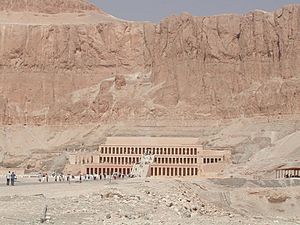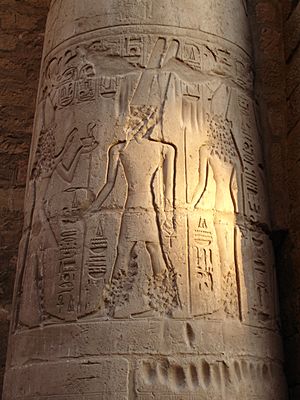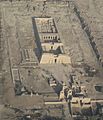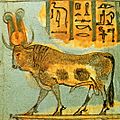Egyptian temple facts for kids
Ancient Egyptian temples were special buildings where people officially worshiped their gods. Egyptians believed these temples were like homes for their gods. Sometimes, temples were also built especially for the pharaohs, who were their kings.
Inside these temples, Egyptians performed many important religious rituals. People would bring offerings, which were like gifts, to the gods. They also told stories about the gods through big festivals. These celebrations helped them believe that everyday life would continue smoothly.
The pharaohs were in charge of making sure there were enough temples and that the gods were looked after. This took a lot of hard work and building materials. Because it was such a big job, the pharaohs gave much of this responsibility to priests. Most regular people couldn't go into the most special parts of the temple or join all the ceremonies. However, the temple was still a very important religious place for all Egyptians. They went there to pray, give gifts, and ask the gods for help.
Contents
Inside an Egyptian Temple
The most important part of any temple was the sanctuary. This was the most secret and special room, and it usually held a statue of the god.
In the early days of Egypt, around 3000 BCE, temples were quite small. But over time, priests and pharaohs added more rooms, and the temples grew much bigger. These rooms were often decorated with many religious pictures and carvings.
By the time of the New Kingdom (about 1550-1070 BCE), temples became huge buildings made of strong stone. They were built in special ways for their religion. A typical temple would have large halls, open courtyards, and very tall entrance pillars. Some of these amazing temples are still standing today! Beyond the main temple, there was usually an outer wall, with other buildings inside.
Temples and Egyptian Society
Large temples were not just religious places; they were also like big businesses. They owned a lot of land and employed thousands of ordinary people to help with their needs. This meant temples were important centers for the economy.
The priests who managed these temples had a lot of power and influence. Sometimes, they even disagreed with the king!
The End of Temple Building
Egyptians kept building temples even when their nation became weaker and was ruled by the Roman Empire. However, when Christianity became popular, it put more pressure on the ancient Egyptian religion. The very last temple was closed in 550 CE.
For hundreds of years after that, many of these ancient buildings were damaged and forgotten. But in the early 19th century, people in Europe became very interested in ancient Egypt. The study of ancient Egypt became known as Egyptology.
Today, Egyptologists still study the temples that survived and the remains of those that were destroyed. These temples teach us a lot about how ancient Egyptian society worked. Dozens of temples are still standing today. Many have become famous tourist spots, bringing money to modern Egypt.
Images for kids
-
The Temple of Isis at Philae, with pylons and an enclosed court on the left and the inner building at right. Fourth to first century BC.
-
Low relief of Seti I performing rituals for the god Amun, from Seti's mortuary temple at Abydos. Thirteenth century BC
-
Sunk relief of personified provinces of Egypt bearing offerings for the temple god, from the mortuary temple of Ramesses II at Abydos. Thirteenth century BC
-
Reconstruction of the Old Kingdom pyramid temple of Djedkare Isesi, with causeway leading out to the valley temple. Twenty-fourth century BC.
-
Entrance pylon of Luxor Temple, one of the major New Kingdom temples. Fourteenth to thirteenth century BC.
-
Roman-era mammisi at Dendera Temple complex. First to second century AD.
-
Stone construction in a wall of the Valley Temple of Khafre. Twenty-sixth century BC.
-
A rock-cut chamber in the Great Temple of Abu Simbel. Thirteenth century BC.
-
The temple of Ramesses III at Medinet Habu, surrounded by the remains of subsidiary structures. Twelfth century BC.
-
Shrine in the cella of the Temple of Edfu. Fourth to third century BC
-
Amenhotep III presents a variety of offerings in a relief from Luxor Temple. Fourteenth century BC.
-
Votive statue of a man donating a shrine containing a figure of Osiris. Thirteenth to eleventh century BC.
-
Reconstruction work on the Ninth Pylon at Karnak (fourteenth century BC), from whose interior talatat blocks from the Amarna Period are being retrieved
-
Frieze of sculpted uraei, or rearing cobras, atop a wall at the pyramid complex of Djoser. Twenty-eighth century BC.
-
Obelisk of Senusret I at Heliopolis. Twentieth century BC.
See also
 In Spanish: Templo egipcio para niños
In Spanish: Templo egipcio para niños



























